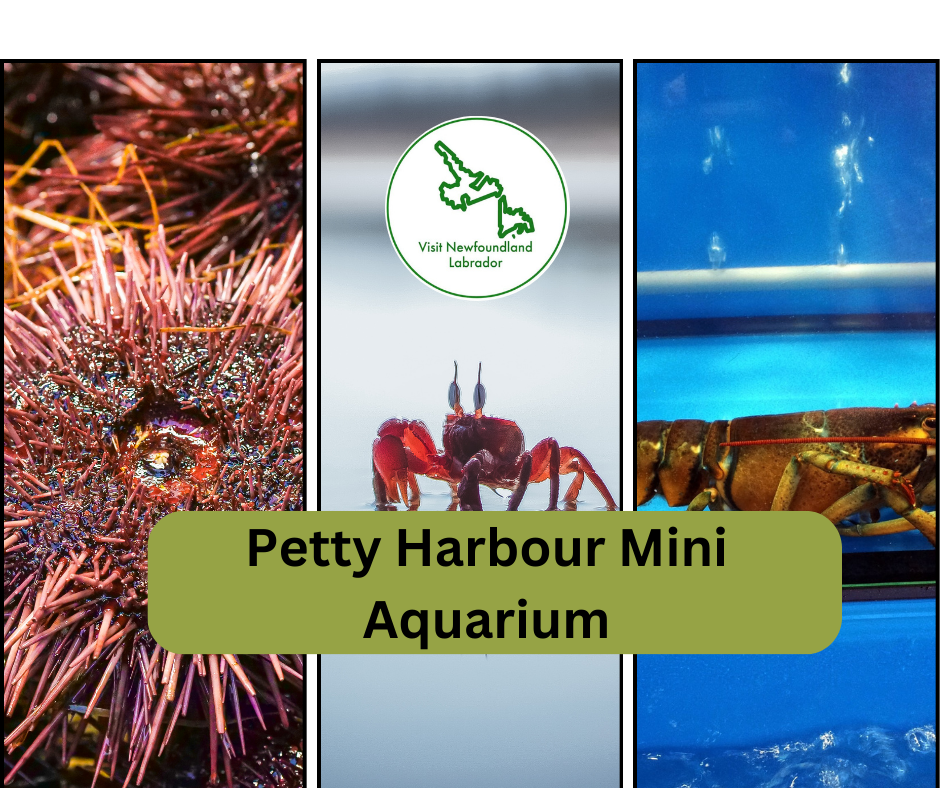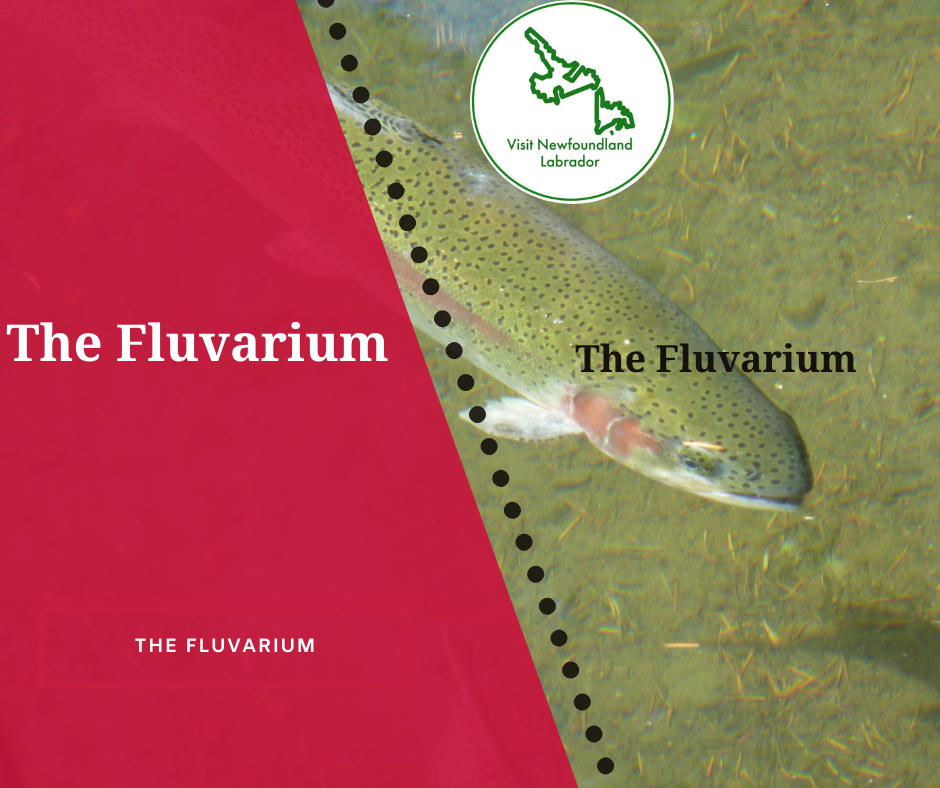The Best Exciting Summer Activities in St. John’s, Newfoundland
These are the best exciting summer activities in St. John’s, Newfoundland, that you can enjoy with your family.
1. Johnson Geo Centre
Located midway up scenic Signal Hill in St. John’s, Newfoundland, the Johnson Geo Centre is a must-visit destination for geology enthusiasts and curious minds. This state-of-the-art science center, carved deep into the solid bedrock of the iconic hill, offers an immersive experience of the geological history of our planet, with a particular focus on Newfoundland and Labrador.
The Geo Centre’s exhibits are fascinating and educational, providing a comprehensive look at the Earth’s billions of years of history. Visitors can explore the main exhibit area, where they will find captivating displays of the geological forces that shaped our planet. The center also highlights the unique geology of Newfoundland, showcasing ancient rock formations and fossils that date back many eras. Additionally, the Johnson Geo Centre features interactive exhibits that engage visitors of all ages. This level of engagement makes it an ideal destination for families and school groups.
One of the Johnson Geo Centre highlights is the ExxonMobil Oil and Gas Gallery, which delves into the science and technology behind oil and gas exploration and production. This exhibit provides an in-depth look at the industry’s impact on the province and the world, blending educational content with cutting-edge technology.

The Johnson Geo Centre in St. John’s, Newfoundland, is a treasure trove of geological knowledge and a testament to the province’s rich natural resources history. Its engaging exhibits, stunning location, and educational programs make it a beacon of learning and exploration for visitors from near and far. Whether a seasoned geologist or a curious traveller, the Johnson Geo Centre promises an enriching experience that will leave you with a deeper appreciation for the Earth geological wonders.
Website: Johnson Geo Centre › Visit Newfoundland and Labrador.
What is the Johnson Geo Centre in St. John’s, Newfoundland?
The Johnson Geo Centre is a geological interpretation center on Signal Hill in St. John’s, Newfoundland. It offers exhibits that explore the geological history of Newfoundland and Labrador and the Earth.
What can visitors expect to see at the Johnson Geo Centre?
Visitors can expect to see interactive exhibits on the Earth’s geological history, ancient rock formations, fossils, and oil and gas industry displays.
Where is the Johnson Geo Centre located?
The Johnson Geo Centre is on Signal Hill in St. John’s, Newfoundland, offering stunning views and an immersive geological experience. 175 Signal Hill Road, St. John’s, Newfoundland and Labrador Why is the Johnson Geo Centre significant? The Johnson Geo Centre is significant because it educates visitors about the geological history of Newfoundland and Labrador, showcasing unique rock formations and fossils that provide insights into the Earth’s ancient past.
What is the ExxonMobil Oil and Gas Gallery at the Johnson Geo Centre?
The ExxonMobil Oil and Gas Gallery is an exhibit at the Johnson Geo Centre that explains the science and technology behind oil and gas exploration and production, highlighting its impact on Newfoundland and the world. How does the Johnson Geo Centre engage visitors of all ages?
The Johnson Geo Centre engages visitors of all ages through interactive exhibits, educational programs, and hands-on activities that make learning about geology fun and accessible.
What is unique about the geological displays at the Johnson Geo Centre?
The geological displays at the Johnson Geo Centre are unique because they feature rock formations and fossils from Newfoundland that date back to the many era, providing a rare glimpse into the Earth’s ancient history.
Where to Stay
St. John’s, the capital city of Newfoundland and Labrador, Canada, is a vibrant and colourful destination that offers visitors a unique experience. The city has something for everyone, from its stunning beauty to its rich cultural heritage. One of the key elements to planning a successful trip to St. John’s is choosing the right place to stay.
Hotels: For visitors looking for a comfortable and convenient stay in St. John’s, hotels are a popular choice. The city has a wide range of hotel options to suit different budgets and preferences.
2. Petty Harbour Mini Aquarium

Nestled in the charming village of Petty Harbour, Newfoundland, the Petty Harbour Mini Aquarium offers an unparalleled glimpse into the underwater world of the North Atlantic. This seasonal, non-profit marine education facility is dedicated to fostering ocean conservation and awareness. From June to October, the aquarium showcases diverse local marine life, providing educational experiences for visitors of all ages.
Website: Petty Harbour Mini Aquarium › A quick Drive from St John’s.
One of the standout features of the Petty Harbour Mini Aquarium is its commitment to sustainability and conservation. Unlike traditional aquariums, it operates on a “catch-and-release” model. This means that all the marine animals are collected locally and released back into their natural habitats at the end of the season. This approach ensures marine life’s well-being and offers an opportunity to learn about and engage with the local ecosystem.
The exhibits at the Petty Harbour Mini Aquarium are designed to be interactive and engaging. You can touch and feel various sea creatures in the touch tanks, offering a hands-on educational experience that is both fun and informative. The aquarium also hosts a variety of workshops and events about marine life and ocean conservation.
Located just a short drive from St. John’s, the Petty Harbour Mini Aquarium is an accessible and must-visit destination for families, school groups, and marine enthusiasts. Its scenic location, coupled with the rich aquatic biodiversity it showcases, makes it a unique attraction in Newfoundland. Whether you’re a local or a tourist, a visit to the Petty Harbour Mini Aquarium promises to be an enriching and memorable experience.
What is the Petty Harbour Mini Aquarium?
The Petty Harbour Mini Aquarium is a seasonal, non-profit marine education facility in Petty Harbour, Newfoundland. It showcases local marine life and promotes ocean conservation through interactive exhibits and educational programs. Where is the Petty Harbour Mini Aquarium located? The Petty Harbour Mini Aquarium is situated in the picturesque village of Petty Harbour, just a short drive from St. John’s, Newfoundland. Address: 5 A Southside Road, Petty Harbour, Newfoundland and Labrador.
What makes the Petty Harbour Mini Aquarium unique?
The aquarium operates on a “catch-and-release” model, meaning all marine animals are collected locally and released back into their natural habitats at the end of the season. This sustainable approach distinguishes it from traditional aquariums. What are the operating months for the Petty Harbour Mini Aquarium? The Petty Harbour Mini Aquarium is open from June to September, allowing visitors to explore the local marine life during the warmer months.
What types of exhibits can visitors expect at the Petty Harbour Mini Aquarium?
Visitors can explore interactive and engaging exhibits, including touch tanks where they can feel and interact with various sea creatures. The exhibits focus on the local marine biodiversity of the North Atlantic.
Are there educational programs available at the Petty Harbour Mini Aquarium? Yes, the Petty Harbour Mini Aquarium offers different educational programs, workshops, and events to enhance understanding and appreciation of marine life and ocean conservation.
How does the Petty Harbour Mini Aquarium contribute to marine conservation?
By operating a catch-and-release model, the aquarium ensures the well-being of marine life and promotes sustainable practices. Additionally, its exhibits and educational initiatives raise awareness about ocean conservation. Is the Petty Harbour Mini Aquarium family-friendly? Absolutely! The Petty Harbour Mini Aquarium is an ideal destination for families. Its interactive exhibits and hands-on experiences are designed to engage visitors of all ages.
Can school groups visit the Petty Harbour Mini Aquarium?
Yes, school groups are welcome at the Petty Harbour Mini Aquarium. The facility offers tailored educational programs that align with school curriculums, making it an excellent field trip destination. How can I support the Petty Harbour Mini Aquarium? Visitors can support the Petty Harbour Mini Aquarium by visiting, participating in its programs, and donating. As a non-profit organization, it relies on community support to continue its mission of promoting marine conservation.
Quirky and Unusual Things to Do in St John’s: 19 Quirky and Unusual Things to Do in St John’s.
The easiest way to get around St. John’s is by renting a car. There are several car rental companies in the city, and renting a car gives you the freedom to explore at your own pace. You can quickly drive to some of the city’s top attractions, like Signal Hill or Cape Spear Lighthouse, and there’s plenty of parking available. Plus, having a car is essential if you plan to venture outside St. John’s.
Use public transportation.
St. John’s has a reliable public transportation system if you prefer to avoid driving. The Metrobus operates throughout the city and surrounding areas, and there are several routes to choose from. Fares are affordable, and you can purchase a day pass if you plan on using the bus frequently. The Metrobus website has a trip planner tool that makes finding the best route to your destination easy.
Find Your Rental Cars:
For visitors looking for rental cars for their trip to Newfoundland and Labrador. We have many car rental options to suit different budgets and preferences.
Take a taxi
Taxis are readily available in St. John’s. You can stop s taxi on the street or call to book one through a local taxi company. These services are convenient if you need to travel to a specific destination and want to avoid parking.
- Jiffy Cabs: 709-722-2222
- City Wide Taxi: 709-722-7777
- Red & Yellow Cabs: 709-726-6666
- Bugdens: 709-722-4400
- Newfound Cabs: 709-744-4444
3. Quidi Vidi Village Artisan Studios

Nestled in the picturesque harbour of Quidi Vidi Village, Newfoundland, Quidi Vidi Village Artisan Studios offers a unique blend of artistic creativity and historical charm. This vibrant arts hub in the heart of Quidi Vidi Village provides a dynamic space for local artists and artisans to create, display, and sell their work. The studios, housed in a renovated fishing plantation, showcase the area’s rich cultural heritage while fostering contemporary artistic expression.
Website: Quidi Vidi Village Artisan Studios in Quidi Vidi Village.
Visitors of Quidi Vidi Village Artisan Studios can explore various handmade crafts, including ceramics, textiles, jewelry, and paintings. Each studio is occupied by a different artist, allowing multiple styles and mediums to be displayed. This setup supports the local arts community and provides an enjoyable experience for tourists and locals.
The studios are in a scenic area offering more than just art. Quidi Vidi Village is known for its stunning views, historic buildings, and the famous Quidi Vidi Brewery. This combination makes it an ideal destination for those looking to experience Newfoundland’s unique natural beauty, history, and culture blend. After browsing the artisan studios, visitors can stroll along the harbour, visit the brewery to taste local craft beer, or enjoy a meal at one of the charming local eateries.
Furthermore, Quidi Vidi Village Artisan Studios frequently hosts events and workshops, providing opportunities for the public to engage with the arts community. These events often include live demonstrations, art classes, and open studio days, enhancing the visitor experience and promoting a deeper appreciation for local craftsmanship.
Quidi Vidi Village Artisan Studios is more than just a place to buy art. It is a vibrant cultural destination celebrating Newfoundland artistic spirit. Its beautiful setting, diverse crafts, and strong community focus make it a must-visit for anyone exploring St. John’s.
4. Quidi Vidi Brewery

Nestled in the picturesque village of Quidi Vidi, just outside St. John’s, Newfoundland, Quidi Vidi Brewery is a beacon of craft beer excellence. This brewery has become synonymous with the local culture, crafting beers that capture the essence of Newfoundland rugged beauty and storied heritage. Visitors to Quidi Vidi Brewing are treated to a unique experience that blends the art of Brewing with the charm of its historic surroundings.
Website: Quidi Vidi Brewery › Visit Newfoundland and Labrador.
One of the standout features of Quidi Vidi Brewery is using local ingredients. The brewery sources the purest water from icebergs on the coast of Newfoundland, giving the Iceberg beers a distinctive taste that can’t be found elsewhere. Their flagship beer, Iceberg Lager, is a testament to this dedication, offering a crisp and refreshing profile that has won numerous accolades.
The brewery’s location in Quidi Vidi village adds to its allure. The village’s colourful houses and serene harbour provide a stunning backdrop for the brewery. Guests can take guided tours that offer insights into the beer brewing process, from the selection of ingredients to the final pour. These tours are informative and steeped in the rich history of Quidi Vidi and St. John’s.
Quidi Vidi Brewery hosts various events throughout the year, including live music and food festivals, making it a vibrant place for locals and tourists. With its cozy atmosphere, the taproom is the perfect place to enjoy a pint while soaking in the beauty of Quidi Vidi.
Quidi Vidi Brewery is more than just a brewery. It celebrates Newfoundland culture, community, and natural beauty. Whether you are a craft beer enthusiast or a curious traveller, visiting Quidi Vidi Brewery will be a memorable experience.
What makes Quidi Vidi Brewery unique?
Quidi Vidi Brewery is unique due to its use of pure iceberg water in its brewing process, which gives its beers a distinctive and refreshing taste. The brewery’s location in the historic Quidi Vidi village adds to its charm, providing a picturesque setting that enhances the overall experience.
What are the most popular beers at Quidi Vidi Brewing? The most popular beers at Quidi Vidi Brewery include Iceberg Lager, known for its crisp and clean flavour, and Crown & Anchor, which offers a perfect taste.
Can visitors tour Quidi Vidi Brewery?
Yes, visitors can tour Quidi Vidi Brewing. The guided tours provide an in-depth look at the brewing process, from ingredient selection to fermentation and packaging. Tours also include tastings of their most popular beers, making it a comprehensive and enjoyable experience.
What events does Quidi Vidi Brewery host? Quidi Vidi Brewery hosts various events throughout the year, including live music performances, beer tastings, and food festivals. These events showcase the best local culture and cuisine, making the brewery a lively and vibrant destination.
Is Quidi Vidi Brewery family-friendly?
While Quidi Vidi Brewery primarily caters to adults, families are welcome to visit. The brewery’s taproom offers a cozy and inviting atmosphere, and children can enjoy non-alcoholic beverages while adults sample the craft beers. How does Quidi Vidi Brewery contribute to the local community?
Quidi Vidi Brewery contributes to the local community by sourcing ingredients locally, providing jobs, and hosting events that unite people. The brewery also supports local artists and musicians, creating a vibrant cultural hub in Quidi Vidi village.
Can I buy Quidi Vidi Brewery beers outside of Newfoundland?
Quidi Vidi Brewery beers are primarily distributed within Newfoundland and Labrador. However, select beers may be available in other parts of Canada. It is best to check availability with local retailers or the brewery’s website. What is the best time to visit Quidi Vidi Brewing? The best time to visit Quidi Vidi Brewery is during the summer when the weather is pleasant, and the village is bustling with activity. However, the brewery offers a cozy retreat year-round, with seasonal events that make every visit special.
5. The Fluvarium

Nestled in the middle of St. John’s, Newfoundland, The Fluvarium is a testament to the region’s commitment to environmental education and aquatic conservation. This unique facility, located within the scenic Pippy Park, offers an immersive experience of the world of the park’s freshwater ecosystems.
Upon entering The Fluvarium, guests are greeted by a series of exhibits that highlight the biodiversity of Newfoundland freshwater habitats. The centrepiece of this educational journey is the underwater viewing windows, providing a rare glimpse into the natural behaviour of aquatic species in their native environment. This unparalleled vantage point allows visitors to observe trout and various invertebrates as they navigate their watery home.
Website: The Fluvarium › Visit Newfoundland and Labrador.
The Fluvarium offers various educational programs designed to engage visitors of all ages. From school field trips to community workshops, these programs emphasize hands-on learning and foster a deeper appreciation for environmental stewardship. Furthermore, the outdoor trails surrounding The Fluvarium invite guests to explore the natural beauty of Pippy Park.
The Fluvarium is an educational center and a hub for conservation efforts. It collaborates with local and international organizations to promote sustainable practices and protect freshwater ecosystems. This dedication to conservation is evident in its ongoing research projects and public outreach initiatives.
With its engaging exhibits, educational programs, and commitment to conservation, it offers a unique and enriching experience for all who walk through its doors.
What is The Fluvarium in St. John’s, Newfoundland?
The Fluvarium is an environmental education center in Pippy Park, St. John’s, Newfoundland. It focuses on freshwater ecosystems, providing visitors with interactive exhibits and underwater viewing windows to observe aquatic species in their natural habitats. What can visitors see at The Fluvarium? Visitors can see a variety of freshwater species, including trout and invertebrates. The underwater viewing windows offer a unique perspective on the behaviour and interactions of these species within their natural environment.
Are there educational programs available at The Fluvarium?
Yes, The Fluvarium offers a range of educational programs for all ages. These include school field trips, community workshops, and hands-on learning experiences emphasizing environmental stewardship and conservation. Where is The Fluvarium located? The Fluvarium is in Pippy Park, a large urban park in St. John’s, Newfoundland. The address is 5 Nagle’s Place, accessible from downtown St. John’s.
Is The Fluvarium suitable for children?
Absolutely! The Fluvarium is designed to be family-friendly, with many exhibits and educational programs that engage children and help them learn about freshwater ecosystems in a fun and informative way. What kind of conservation efforts is The Fluvarium involved in? The Fluvarium is involved in various conservation efforts, including research projects, public outreach initiatives, and collaborations with different organizations to promote sustainable practices and protect freshwater ecosystems.
Can visitors explore the outdoor areas around The Fluvarium?
Yes, The Fluvarium is surrounded by beautiful outdoor trails within Pippy Park. All the trails allow visitors to explore the area, making it an excellent destination for nature enthusiasts. Is there an admission fee for The Fluvarium? There is an admission fee for The Fluvarium, which helps support its educational programs and conservation efforts. The costs are generally affordable, and there may be discounts for children, seniors, and groups.
6. The Railway Coastal Museum

The Railway Coastal Museum offers visitors a fascinating glimpse into the history of Newfoundland railways and coastal boat services. Located in the historic Newfoundland Railway Station, this museum is a testament to the province’s rich transportation heritage.
Firstly, the museum’s exhibits meticulously detail the evolution of the Newfoundland Railway from its inception in the late 19th century to its eventual closure. You can explore different artifacts, including vintage locomotives, model trains, and historical photographs that bring the past to life. Notably, the museum also features interactive displays, which engage everyone, making history accessible and entertaining.
Website: The Railway Coastal Museum › Visit Newfoundland and Labrador.
Additionally, the Railway Coastal Museum pays homage to the coastal boat service that was crucial in connecting the island’s remote communities.
Moreover, the museum offers a unique insight into the daily lives of those who worked on the railways and coastal boats. Personal stories, diaries, and letters are on display, offering an intimate perspective on the challenges and triumphs faced by these individuals. This human element enriches the visitor experience, fostering a deeper connection to the province’s history.
The Railway Coastal Museum in St. John’s, Newfoundland, is more than just a place of historical artifacts. It is a vibrant educational resource that celebrates the province’s transportation legacy.
What is the Railway Coastal Museum in St. John’s, Newfoundland?
The Railway Coastal Museum in St. John’s, Newfoundland, is dedicated to preserving and showcasing the history of Newfoundland railways and coastal boat services. It is located in the old Newfoundland Railway Station and features many exhibits, artifacts, and interactive displays.
Where is the Railway Coastal Museum located? The Railway Coastal Museum is in the historic Newfoundland Railway Station at 495 Water Street, St. John’s, Newfoundland. This central location makes it easily accessible for visitors exploring the city.
What can visitors expect to see at the Railway Coastal Museum?
Visitors to the Railway Coastal Museum can expect to see a variety of exhibits, including vintage locomotives, model trains, historical photographs, and artifacts related to the Newfoundland Railway and coastal boat services. The museum also features interactive displays and personal stories from individuals who worked on the railways and boats.
Why is the Railway Coastal Museum significant? The Railway Coastal Museum is substantial because it preserves and celebrates the history of Newfoundland transportation networks. The museum highlights the vital role that railways and coastal boats played in connecting the island’s remote communities and supporting its economic development.
Are there any special events or programs at the Railway Coastal Museum?
The Railway Coastal Museum hosts various special events and educational programs annually. These include guided tours, workshops, and family-friendly activities to engage visitors of all ages and deepen their understanding of Newfoundland transportation history. How long does it typically take to tour the Railway Coastal Museum? A typical tour of the Railway Coastal Museum takes about 1 to 2 hours. These tours give visitors ample time to explore the exhibits, participate in interactive displays, and absorb the wealth of historical information.
Is the Railway Coastal Museum suitable for children?
Absolutely! The Railway Coastal Museum is family-friendly and offers interactive, educational and entertaining exhibits for children. The museum aims to make history accessible and enjoyable for visitors of all ages. What are the opening hours of the Railway Coastal Museum? The Railway Coastal Museum is open daily, with varying hours depending on the season. The museum operates from June to September.
Is there an admission fee to access the Railway Coastal Museum?
Yes, there is an admission fee. However, the cost is modest and contributes to the preservation and maintenance of the museum. Discounts are often available for children, seniors, and groups—$ 4 to $10. How can I get more information about the Railway Coastal Museum? For more information about the Railway Coastal Museum in St. John’s, Newfoundland, you can visit their official website or contact them directly—the website details exhibits, events, admission fees, and opening hours.

Is St. John’s, Newfoundland, worth visiting?
St. John’s, the capital, is worth visiting. St. John’s offers a rich cultural heritage, a vibrant arts scene, and breathtaking natural landscapes. Known for its colourful row houses, historic sites like Signal Hill, and picturesque harbour, St. John’s provides a unique blend of natural beauty. The city’s friendly locals, lively music scene, and excellent seafood add to its charm, making it a must-visit destination.
What is St. John’s, Newfoundland, famous for?
St. John’s is famous for several things:
- Signal Hill: This historic site offers panoramic views, and the Cabot Tower is where the first transatlantic wireless communication was received.
- George Street is renowned for its nightlife, with the most bars and pubs per capita in North America.
- Colourful Row Houses: Known as Jellybean Row, these brightly painted homes are iconic.
- Rich History: As one of the oldest cities in North America, it has a rich maritime history and cultural heritage.
How many days does it take to visit St. John’s, Newfoundland?
To fully experience St. John’s and its surroundings, a visit of 4 to 5 days is recommended. This allows time to explore the city’s historical sites, enjoy the local cuisine, enjoy the nightlife on George Street, and venture out to nearby natural attractions such as Cape Spear and Quidi Vidi Village.
Is St. John’s, Newfoundland, a walkable city?
Yes, St. John’s is a walkable city, especially in the downtown area, where many attractions, restaurants, and shops are concentrated. The city’s hilly terrain can be challenging, but it also offers beautiful vistas and charming streets to explore on foot.
What is the best month to visit Newfoundland?
The best months to visit Newfoundland are from late June to early September. The weather is milder during this period, and you can enjoy outdoor activities like hiking, whale watching, and iceberg spotting. July and August are viral for tourists.
What is the best time of year to visit St. John’s, Newfoundland?
The best time to visit St. John’s is during the summer, from June to early September. During this time, the weather is warm, and many festivals and events occur. This is also the peak season for whale-watching and iceberg viewing.
Is St. John’s Newfoundland expensive?
St. John’s can be moderately expensive, especially during peak tourist season. Accommodation, dining, and activities can add up, but budget-friendly options are also available. Compared to larger Canadian cities, St. John’s is relatively affordable.
Is Newfoundland expensive to visit?
Newfoundland is not excessively expensive to visit, but costs can vary depending on the time of year and type of accommodation. While certain activities and dining experiences may be costly, there are plenty of free or low-cost activities to enjoy.
What is the famous street in St. John’s, Newfoundland?
George Street is famous in St. John’s for its vibrant nightlife and numerous bars and pubs. George Street is a popular spot for locals and tourists looking to experience live music and socialize.
Can you get around St. John’s without a car?
Yes, you can get around St. John’s without a car, especially downtown, where many attractions are within walking distance. You’ll have access to convenient transportation options, such as public transportation, taxis, and ride-sharing services.
How long is the ferry ride from Nova Scotia to St. John’s, Newfoundland?
There is no direct ferry to St. John’s. However, you can take a ferry from North Sydney, Nova Scotia, to either Argentia (a 16-hour ride) or Port aux Basques (a 6–8-hour ride) in Newfoundland. From there, you must drive to St. John’s, which takes approximately 1.5 hours from Argentia or 9 hours from Port aux Basques.
How long does it take to drive around St. John’s?
Driving around St. John’s can take about an hour, depending on traffic and stops. Exploring the greater St. John’s area, including nearby attractions like Cape Spear and Quidi Vidi, can take several hours.
What is the crime rate in St. John’s, Newfoundland?
St. John’s has a relatively low crime rate compared to other Canadian cities. While it experiences typical urban crime, it is generally considered a safe place for residents and visitors.
How cheap is Newfoundland?
Newfoundland is relatively affordable compared to other parts of Canada. While some areas, especially St. John’s, can be expensive, smaller towns and rural areas, however, offer more budget-friendly options for accommodation and dining.
What is the best way to tour Newfoundland?
The best way to tour Newfoundland is by car. This allows you to explore the island’s diverse landscapes, remote villages, and natural attractions at your own pace. Renting a car is recommended if you’re flying into the province.
In what month do you see icebergs in Newfoundland?
Iceberg season in Newfoundland typically runs from late May to early June, though icebergs can sometimes be seen as late as July. The best month for iceberg viewing is usually June.
What is the best month to see icebergs in Newfoundland?
June is generally the best month to see icebergs in Newfoundland. This is when most icebergs drift along the coast, providing spectacular viewing opportunities.
When can I see puffins in Newfoundland?
Puffins can be seen in Newfoundland from late May to early September. The best months to see them are June and July, when they are most active during their breeding season.
What is the wettest month in Newfoundland?
October is typically the wettest month in Newfoundland, and it experiences the highest average rainfall.
When can you see whales in St John’s, Newfoundland?
Whale-watching season in St. John’s is from mid-June to mid-August. During this time, humpback, minke, and other whale species migrate through the waters of Newfoundland.
What should I pack for St. John’s, Newfoundland?
When visiting St. John’s, pack layers to accommodate varying weather conditions. Essentials include:
- Waterproof jacket and footwear
- Warm clothing (sweaters, hats, gloves)
- Comfortable walking shoes
- Sunscreen and sunglasses
- Cameras and binoculars for wildlife and iceberg viewing
Can you see the Northern Lights from Newfoundland?
You can watch the Northern Lights (Aurora Borealis) from Newfoundland, particularly in low-light pollution areas. The best time to see them is from late fall to early spring.
Where is the best place to see whales and icebergs in Newfoundland?
Twillingate and Bonavista are Newfoundland’s best places to see whales and icebergs. These coastal areas offer excellent viewing opportunities and tours.
Are there polar bears in Newfoundland?
Polar bears are occasionally seen in the northern parts of Newfoundland and Labrador, particularly in the Labrador region. They are not commonly found in Newfoundland itself.
How long does it take to drive from one end of Newfoundland to the other?
Driving from the western end of Newfoundland (Port aux Basques) to the eastern end (St. John’s) takes approximately 9–10 hours without significant stops.
Is Fogo Island worth visiting?
Fogo Island is worth visiting for its unique culture, stunning landscapes, and renowned Fogo Island Inn. It offers a distinctive experience of Newfoundland’s heritage and natural beauty.
How often can you see northern lights in Newfoundland?
The Northern Lights can be seen in Newfoundland several times a year, particularly during periods of high solar activity. The best times are during winter when nights are longer and darker.
What is the best time to see the Northern Lights?
The best time to see the Northern Lights is during the winter, from late September to early April, particularly around midnight or early morning.
How long is the ferry ride to Fogo?
The ferry ride to Fogo Island from Farewell, Newfoundland, takes approximately 45 minutes to an hour.
How much is the ferry to Fogo Island?
As of the latest information, the ferry to Fogo Island costs around $15–20 CAD per vehicle and additional fees for passengers, but prices can vary, so it’s best to check current rates.
What is so special about Fogo Island?
Fogo Island is unique for its rugged natural beauty, traditional outport culture, and the acclaimed Fogo Island Inn. It’s known for its artistic community, distinctive architecture, and stunning coastal Scenery.
Are there narwhals in Newfoundland?
Narwhals are typically found in Arctic waters and are uncommon in Newfoundland.
Are there dolphins in Newfoundland?
Yes, dolphins can be seen in the waters around Newfoundland, including species like the Atlantic white-sided dolphin and the common dolphin.
Are there killer whales in Newfoundland?
Killer whales (orcas) are occasionally sighted around Newfoundland, especially during summer.
What is Cape Spear known for?
Cape Spear is known for being the easternmost point in North America. It features a historic lighthouse and offers stunning 180-degree views of the Atlantic Ocean, making it a popular tourist spot.
Where can I see whales in Newfoundland?
Some of the best places to see whales in Newfoundland include:
- St. John’s and Cape Spear
- Trinity and Bonavista
- Twillingate
- Witless Bay Ecological Reserve
How do you see puffins in St John’s?
To see puffins near St. John’s, visit the Witless Bay Ecological Reserve island, which is home to large colonies of puffins. Boat tours from Bay Bulls can take you close to the puffin nesting sites.
How long do you need to see Newfoundland?
Plan to spend at least 7–19 days to see Newfoundland highlights. This allows enough time to explore St. John’s, the Avalon Peninsula, Gros Morne National Park, and other key attractions.
When should I go to Newfoundland?
The best time to visit Newfoundland is from late June to early September when the weather is mild. You can enjoy outdoor activities, events, and festivals. This period is also ideal for whale-watching and iceberg-viewing.
These are the best travel planning resources you should use.
Looking to book your trip to Newfoundland and Labrador? Use these resources that are tried and tested by other travellers like you who vacation in Newfoundland and Labrador. Bookmark these links. Save them for future reference.
Booking Flights, Hotels or B&B: Start planning your next vacation trip by finding the best flight, hotel or b&b deals. Book Here
Finding things to do in Newfoundland and Labrador on TripAdvisor and Viator is not hard. Enjoy boat tours, whale watching, icebergs watching, kayaking and other activities.
You can also find low prices on hotels, B&B and cabins with these two providers. If you are located in Canada, the USA, the UK or Europe, use Booking.com, and if you are in Canada, the USA or anywhere else, use TripAdvisor.
Car Rental: Here is what we recommend:
When you book with Rentalcars.com, you can compare prices and find the best vehicle for your trip. Economybookings.com Display all their vehicle on the website with a detailed description. They display high-quality photos and a user rating as well. Qeeq.com serves road trip travellers like you from different countries by working with car rental companies worldwide.
Get compensated if your flight is delayed or cancel
AirHelp and Compensateair will help you with flight delays, cancellations, or denied boarding. All you need to do is to submit your flight details, and they will handle the claim process on your behalf. They will handle all the paperwork, airline negotiations, and legal proceedings.
Do you need more help planning your trip?
Check out our Resources Page, where we highlight all the resources and companies you can use to assist with your planning.
Where can I find more information about travelling to Newfoundland and Labrador? Here are helpful resources for planning your trip:
Newfoundland and Labrador Tourism | Travel Canada | The Rooms Provincial Museum



